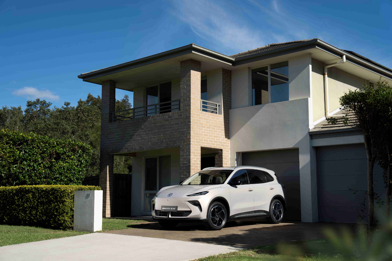The Government’s Clean Car Programme hits its second phase on April 1, with the introduction of a more extensive “feebate” scheme that will reward buyers of low-emission vehicles with rebates, but also fine those who choose higher-emitting models.
And that’s just the start, because the Programme is set to evolve over the next few years. So how does it all work?
CLEAN CAR PROGRAMME
The “Clean Car Programme” is the umbrella term for all of the Government’s legislation designed to reduce the average CO2 of New Zealand’s fleet. Under the Programme sit different schemes, including the Clean Car Discount and Clean Car Standard.
CLEAN CAR DISCOUNT
The “Clean Car Discount” is aimed directly at us, the consumers. The first phase was launched in July last year and introduced rebates for new and used Electric Vehicles (EVs, meaning they have a plug), as long as they are being registered for the first time, cost less than $80,000 and have a three-star safety rating or higher.
New Battery Electric Vehicles (BEVs) are eligible for $8625, while Plug-in Hybrid Electric Vehicles (PHEVs) get $5750. The used-import equivalents qualify for $3450 and $2300.
The term “discount” is a bit misleading, because it’s actually a rebate. The buyer gets that money back from a Government fund, after purchase.
From April, the Discount scheme will be expanded to include all vehicles on sale. Low emissions vehicles (below 146g/km) will receive a rebate proportional to how far below that baseline they fall, while vehicles above 196g/km will attract a fine (also proportional) that’s payable after registration. That leaves a 146-196g “zero band” in the middle where there are no rebates or fines.
Car companies quote different fuel economy/emissions standards from different sources, but of course the feebates need to be consistent for all. So the Government is using a modified version of the international Worldwide harmonised Light-Duty Test Procedure (WLTP), called 3P-WLTP, to calculate its feebates.
So while there is a formula you can use to work out a rebate or fine on a particular car, you need to make sure you’re using the correct 3P-WLTP emissions figure. And why do maths when somebody else can do it for you? DRIVEN has created a calculator that can automatically produce feebates for many of NZ’s most popular models (scan the QR code on this page), or you can visit the Government’s RightCar website.
A couple of examples from DRIVEN’s calculator using some popular NZ-new vehicles: a Suzuki Swift GL automatic (122g/km) will attract a $2340 rebate from April, while a Ford Ranger FX4 (241g/km) will be fined $3160.
The maximum rebate is $8625 (which is why it applies to a zero-emissions BEV), while the maximum fine is $5175.
Note that there are no specific rebates for Hybrid Electrified Vehicles (HEVs); they are treated the same as other petrol or diesel vehicles, but the frugality of HEV and mild-HEV (MHEV) technology means they’ll enjoy especially high rebate amounts.
CLEAN CAR STANDARD
The Clean Car Standard is completely separate to the Clean Car Discount, and aimed directly at car importers – although it will likely have a big impact on consumers.
From 2023, importers will have to meet average CO2 targets for the vehicles they bring in, which will get progressively lower until 2027. The targets are aggressive: from an indicative 145g to 63g by 2027 for passenger cars.
The Standard targets will also be weighted, so small vehicles will be expected to achieve even better results, while larger ones (like SUVs and utes) will get some dispensation. But essentially, it will be very hard for brands to meet their targets without increasing reliance on electrified vehicles.
Fines are paid by the car companies (they can also collect credits of course), but for those that cannot achieve the Standard it’s likely that the cost will be passed on to the end purchaser, meaning some higher-emitting vehicles could become substantially more expensive.





